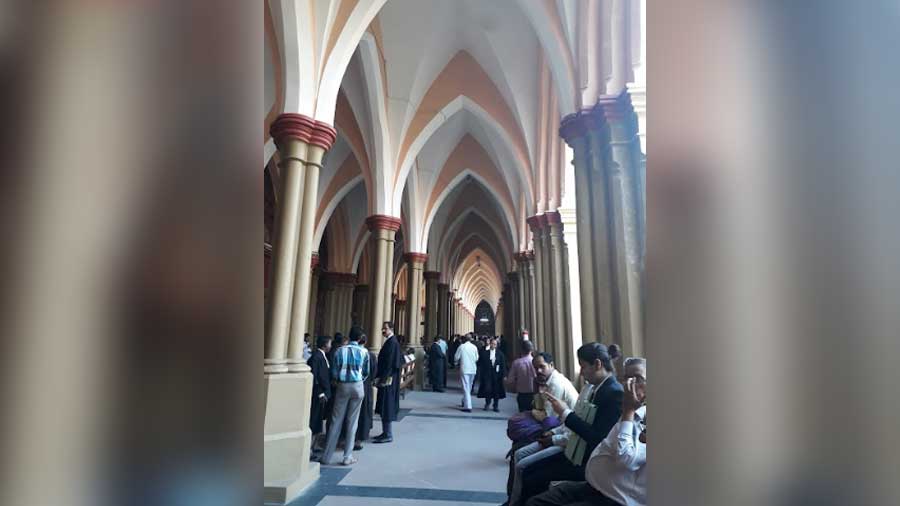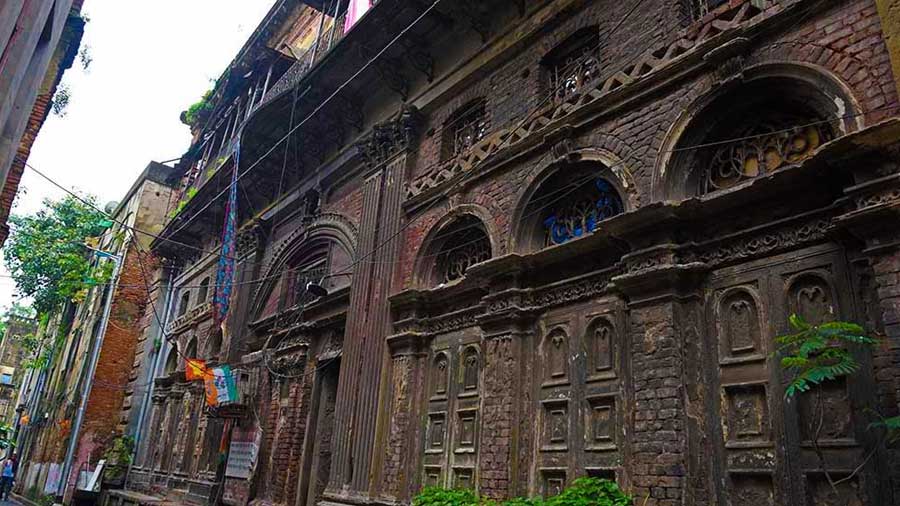Someone was walking towards him through the dark, deserted corridor of the Calcutta High Court. Someone wearing anklets. He could hear the tinkle of her steps. Surely, it had to be a woman. But who was she? What was she doing at that hour?
Then he saw her, a shadowy shape gliding towards him like a mysterious courtesan of the dark. He could see her feet now, her long slender legs, the curve of her waist as they swayed to the sound of the anklets... then he froze. There was nothing visible above her neck.
Manamohan Ghoshal tried to say something, but no words came out. The headless woman too had stopped, as if startled by an unknown presence, and disappeared. The last thing Manamohan remembered before hitting the ground was darkness swirling around the spot where the woman had stood.
This is one of the many stories about disembodied presences that are said to lurk around the gossip-rich corners of the Calcutta High Court, the country’s oldest. Those who have heard these stories, most of them old-time employees, say the tales have grown denser and more vivid with each retelling.

There are many stories about disembodied presences that are said to lurk around the gossip-rich corners of the Calcutta High Court
Wikimedia CommonsTale of the thirsty spirit
One of the earliest such stories is about a 19th century poet, Tapis, who died a prisoner. The poet (about whom hardly anything is documented) had protested against the tyranny unleashed by the British East India Company, which hauled him to court. That must have been sometime after 1862, when the court was established. Tapis was tried and later executed. While in jail he was denied food and water and, by the time he was marched off to the gallows, Tapis was almost completely dehydrated. After his death, stories spread that his ghost roamed the high court premises in search of water.
It is not clear why this tale of the “thirsty spirit” is linked to the high court because the torture took place in prison. A possible explanation could be a sense of disquiet over alleged denial of justice and the lingering belief among the superstitious that the soul of the wronged man had returned to seek after death what had been denied in life. It’s the same theme — denial of justice — that runs through the tale of the headless apparition.
The tinkle of anklets… a headless woman
As the story goes, Manamohan and a fellow court employee, Vajahari Paitandi, had been working late on a winter evening when most of their colleagues had gone home. The two were nearly done for the day when Manamohan decided to use the washroom. As it was already late, Vajahari advised him not to go to the washroom in the next building, which was the Judge’s Court, but use the place beside the wall of their work section.
Manamohan, however, took the long, dark corridor to the washroom. As he walked down the corridor, his footsteps echoed in the dark. Maybe, he thought, it wasn’t such a good idea to ignore Vajahari’s advice. But he didn’t want to turn back. He wasn’t a coward, he told himself. Manamohan had taken a few steps forward when he heard the tinkle of the anklets.

A corridor of the court building, looking decidedly more cheery in the daytime
TT ArchivesBack at their section, Vajahari wondered what was taking his colleague so long. After looking around for some time he too stepped into the corridor. Moments later he spotted him, lying on the floor. But there was a woman sitting beside Manamohan, splashing water on his face, trying to wake him up. Vajahari stepped closer. Then he saw, and a shiver tingled down his spine. As the headless apparition vanished, Vajahari ran to his colleague, shook him back to his senses and somehow helped him to his feet. The two men then left the place as fast as they could.
Manamohan and Vajahari were not the only employees to have heard the sound of anklets or spotted the headless woman on the court premises. Apparently, many others too had come across this mysterious presence.
But who was this woman?
Nistar’s dreams of a new life dashed
The legend goes that towards the end of the 19th century, a judge of the high court had received an unusual application. It was from a sex worker called Nistar Raut who wanted her name to be removed from the register of prostitutes. Nistar, who was strikingly good-looking, had fallen in love with a businessman named Shalikhram and had appealed to the court to help her start a new life, free of the taint of her profession. That wouldn’t be possible if her name was still on the register.

Calcutta High Court in the 1890s
It was too much to ask for from a male-dominated society. The thought of one man having sole access to such a beautiful “commodity” was unacceptable to other men. They first tried to dissuade Nistar from going ahead with her plans of making a clean break and, when that didn’t work, began putting pressure on Shalikhram. When that too failed, they got one of Nistar’s influential clients to implicate the lovers in a case of robbery. Shalikhram was arrested and Nistar’s dreams of a new life collapsed around her.
There was nothing on her headless body, except the anklets
The rest of the story is still a mystery. After a few days, police found Nistar’s body, which was beginning to rot. Her head had been severed from her body. There was nothing on her, except the anklets she used to wear.
Since then, so the story goes, Nistar’s disappointed soul has roamed the high court compound. While some claim to have heard the tinkle of her anklets, others say they have seen her headless body appear out of nowhere and then vanish as suddenly, like a fleeting uneasy reminder. A reminder of how society, in its collective might, denied a young woman a chance to lead a life of her own.
None can shake off that blemish of the past, old-timers say; not even the edifice invested with the authority to grant her wish. And so she roams its corridors, a spectre of justice rebuffed, the tinkle of her anklets an admonition from the past.
Riksundar Banerjee has done a PhD on Ghosts in Literature: Tradition and Evolution. He is the author of The Book Of The Indian Ghosts (Aleph Book Company)







